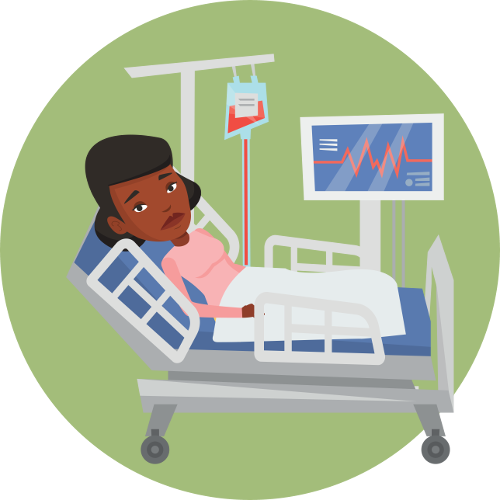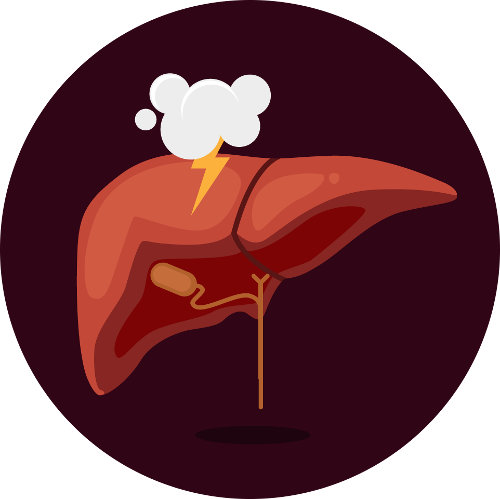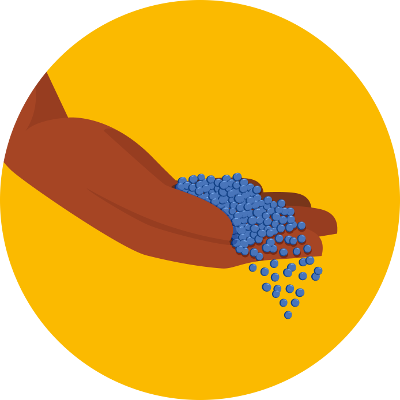 The health damage caused by aflatoxin contamination undoubtedly has appalling human costs, but it also has significant financial costs in terms of healthcare costs and lost productivity. It is one of the biggest and most costly food safety hazards for Africans, reflected in its prominence in the African Food Safety Index launched in 2018.
The health damage caused by aflatoxin contamination undoubtedly has appalling human costs, but it also has significant financial costs in terms of healthcare costs and lost productivity. It is one of the biggest and most costly food safety hazards for Africans, reflected in its prominence in the African Food Safety Index launched in 2018.
These costs are felt at the level of individual families – who can be speedily and suddenly plunged into poverty by the costs of sickness and inability to work – and at the level of national economies. Aflasafe is a highly cost-effective way to minimise – or perhaps even eliminate – these economic impacts.
Wealthy nations are effective at keeping aflatoxin out of food, so most of the costs of contamination for them are market-related, such as income lost when food commodities are discarded or discounted. In Africa, however, the burden of contamination is much more severe, and it is thought that the health-related costs of contaminated food are considerably higher than the market-related costs.
 These costs are difficult to quantify, since they accumulate over years and decades, and the causes of any single case of disease are hard to pin down. However, a study in Tanzania estimated that around 3,334 people fall ill with liver cancer caused by aflatoxin every year, of whom 95% will die of the disease. This takes from the sufferers more than 96,000 lost years (known as disability-adjusted life years, or DALYs). DALYs are a way of putting a number on the burden of a disease, with each DALY being equivalent to a year of healthy life lost to a person, taking into account both premature death and levels of reduced health. The economic impact of this illness and loss of life was estimated at somewhere between USD 6 million and USD 264 million, in Tanzania alone and in a single year.
These costs are difficult to quantify, since they accumulate over years and decades, and the causes of any single case of disease are hard to pin down. However, a study in Tanzania estimated that around 3,334 people fall ill with liver cancer caused by aflatoxin every year, of whom 95% will die of the disease. This takes from the sufferers more than 96,000 lost years (known as disability-adjusted life years, or DALYs). DALYs are a way of putting a number on the burden of a disease, with each DALY being equivalent to a year of healthy life lost to a person, taking into account both premature death and levels of reduced health. The economic impact of this illness and loss of life was estimated at somewhere between USD 6 million and USD 264 million, in Tanzania alone and in a single year.
Estimates from Uganda are even more alarming: there, a study estimated that each year aflatoxin causes 3,700 deaths, robbing sufferers of 269,198 years of healthy life. This costs the government around USD 910,000 in healthcare costs, but the indirect damage to the economy is much higher – around USD 577 million annually.
Whatever the exact numbers, it is clear that both the human suffering and the economic losses caused by aflatoxin are enormous. Aflasafe is a relatively inexpensive way to solve the problem, with the potential to return hundreds of millions of dollars to African economies. This makes it highly cost-effective, as we can see from the example of Nigeria.
A cost-effective solution: the example of maize in Nigeria
Though more data are still needed from across Africa, scientists have looked at the example of maize in Nigeria to quantify the cost-effectiveness of a solution like Aflasafe.
They estimated that by using the product in maize alone, 103,000 to 184,000 DALYs could be saved in Nigeria every year, by preventing 7,900 to 14,200 liver cancer cases.

Meanwhile, to work out the cost of deploying the product, they used an estimate of USD 10–20 per hectare. If all maize fields in Nigeria were treated, the estimated total cost would be USD 42.3 million to 50.7 million. This cost would fall by nearly two-thirds if only maize grown for human rather than animal consumption were treated, but in practical terms it would be difficult to make this separation, and it would skip benefits like improved livestock productivity and keeping aflatoxin out of meat and milk.
To decide if this is cost-effective, we need to look at the relationship between the money spent and the benefits achieved, which we can calculate as the cost-effectiveness ratio. The World Health Organization considers that a health intervention is very cost-effective if the amount spent per DALY saved is less than the per capita gross domestic product (GDP) in the country where it is carried out – that is, the cost-effectiveness ratio is greater than 1.
In Nigeria, we find a cost-effectiveness ratio of 13.8 to 24.8 if only maize for human consumption is treated, or 5.1 to 9.2 if all maize is treated. In other words, the monetised value of cutting cancer cases caused by aflatoxin, in terms of lives saved and quality of life gained, is at least five to ten times greater than the cost of doing so.
Liver cancer is not the only health problem caused by aflatoxin; it is also associated with damage to the immune and digestive systems, stunting children’s growth and contributing to a range of illnesses in adults. Taking these into account the true cost-effectiveness would be even higher. Furthermore, this study looked at an early forerunner of Aflasafe, assuming an effectiveness of 50–90% in cutting aflatoxin. Nigeria’s Aflasafe™ in fact consistently reduces aflatoxin by at least 80–90%.
Return to the industry and economics page to find out about aflatoxin’s impact in other sectors, and how Aflasafe offers a more prosperous, safer future.










